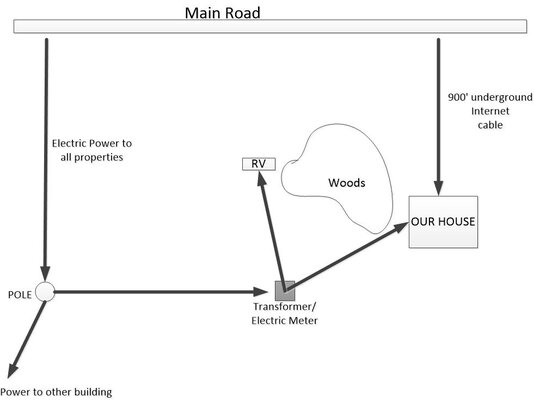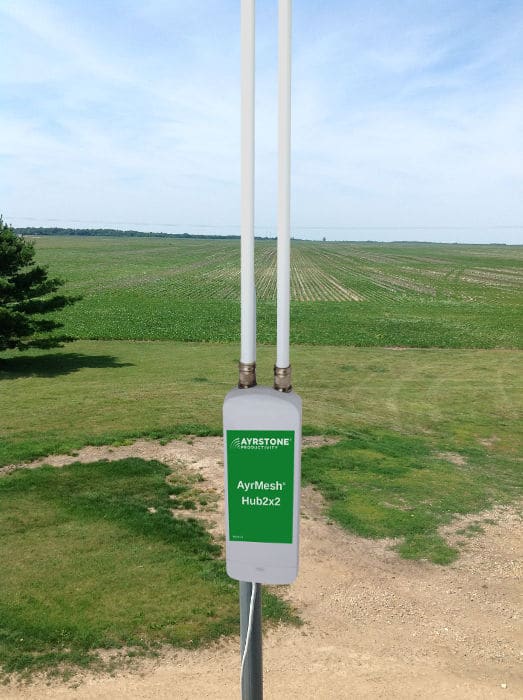jymbee
Well-known member
Trying to find the best solution to provide Internet access to a relative's RV near our house.
We have Internet via a cable connection through our local service provider. We had to go underground about 900 feet from the main road to our house for the installation (long story there). Long before internet was available, we got power from the power line on the same main road. Power comes down to a pole then out to our house as well as another property. From that pole, power goes underground to the transformer & meter that feeds our house as well as a power outlet to the RV. Both our house and the RV are on the same meter.
In the past I've had pretty good results connecting outbuildings to the Internet using devices like the Ubiquity NanoStation loco M2. Connect to Internet on the transmit side then connect wirelessly on the receiving side to a router. In this case however some fairly thick woods rules that out as a possibility.
I've read a bit about these powerline extenders and am wondering whether even though our house and the RV are well apart, does the fact that they both feed off the same meter make such a device a viable option, or... ?
I'll attach a crude diagram in an attempt to illustrate the overall layout.
We have Internet via a cable connection through our local service provider. We had to go underground about 900 feet from the main road to our house for the installation (long story there). Long before internet was available, we got power from the power line on the same main road. Power comes down to a pole then out to our house as well as another property. From that pole, power goes underground to the transformer & meter that feeds our house as well as a power outlet to the RV. Both our house and the RV are on the same meter.
In the past I've had pretty good results connecting outbuildings to the Internet using devices like the Ubiquity NanoStation loco M2. Connect to Internet on the transmit side then connect wirelessly on the receiving side to a router. In this case however some fairly thick woods rules that out as a possibility.
I've read a bit about these powerline extenders and am wondering whether even though our house and the RV are well apart, does the fact that they both feed off the same meter make such a device a viable option, or... ?
I'll attach a crude diagram in an attempt to illustrate the overall layout.


